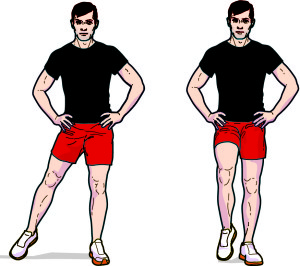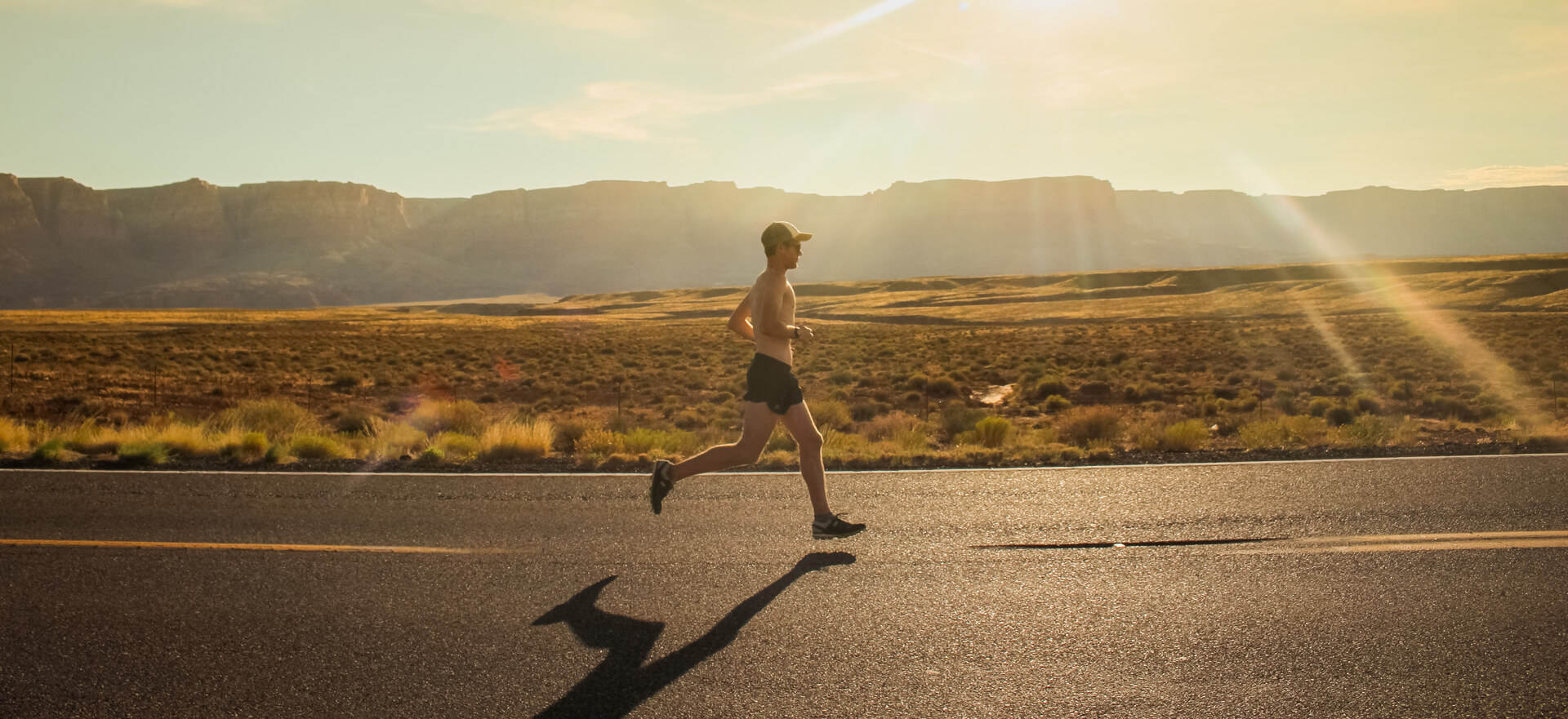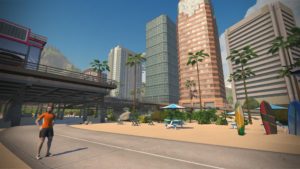Sets, reps and frequency: Perform three sets of 10 to 15 reps.
Clock face reach
Muscles: Thighs, bottom, coordination, balance (quadriceps, hamstrings, glutes, transversus abdominus)
Why do it? When you injure your knee, your nervous system gets damaged too. By improving your balance (or proprioception) you improve the communication between your brain and leg muscles, which will make your muscles rehabilitate faster.
Technique:
- Stand on your left leg
- Keep your core muscles contracted
- Imagine you are standing in the middle of a clock
- Reach your right leg forwards towards the 12 o’clock position
- Then reach towards the three and six o’clock positions
- One round counts as one repetition
- Complete one set before changing over to the left leg
Watch point: Focus on a point in front of you to aid your balance.
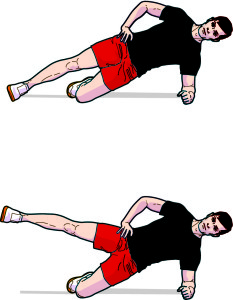 Kneeling side plank and leg lift
Kneeling side plank and leg lift
Muscles: Core, inner and outer thigh, bottom (transversus abdominus, adductors, abductors, glutes)
Why do it? Running is a linear sport. By strengthening the muscles in the side of your body you can improve your endurance and technique.
Technique:
- Lie on your left side with your left knee bent and your right leg straight
- Place your elbow directly underneath your shoulder
- Ensure that you have a straight line between your shoulders, hips and knees
- Lift your hips off the floor
- Hold this as the starting position
- Lift your right leg up as high as you can – aim for slightly higher than your hips
- Lower your leg until your foot touches the floor
Watch point: Keep your core muscles contracted.
Resistance band knee bounce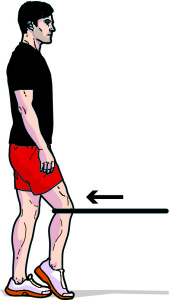
Muscles: Thighs (quadriceps, hamstrings)
Why do it? This works through a pain-free zone for most people and will improve neuromuscular (communication between brain and muscle) stimulation to your knee.
Technique:
- Tie a resistance band in a big loop around a pole
- Stand with your feet hip-width apart facing the pole and place your right leg inside the loop
- Keep the band behind your knee
- Bend your right knee to place your weight on your left foot
- Straighten your leg and tense your front thigh muscles (quadriceps)
Watch point: Stand tall and don’t look down.
Single-leg quarter squat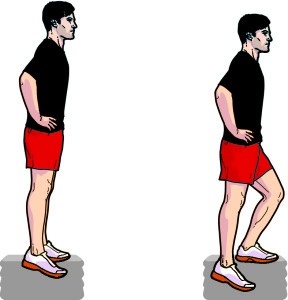
Muscles: Thighs, bottom, balance (quadriceps, hamstrings, glutes)
Why do it? This will improve muscle strength while keeping the knee within a 30-degree bend. It normally doesn’t cause pain and it will improve your neuromuscular communication.
Technique:
- Stand with your left leg on a step
- Allow your right leg to hang next to the step
- Raise the toes on your right foot
- Bend your left knee, lowering until your right heel touches the floor
- Return to the standing position
- Complete one set before changing sides
Watch point: If you’re returning from injury, stay within a pain-free zone.
Split squat
Muscles: Thighs, bottom, hip flexors, balance (quadriceps, hamstrings, glutes, piriformis muscle)
Why do it? Doing single-leg exercises will ensure that both legs develop the same amount of strength to prevent future injuries.
Technique:
- Stand on your left leg
- Place your right foot behind you on a high step or bench
- Bend your standing (left) knee and lower your right knee to the ground
- Return to the standing position
- Complete one set before changing over to the other side
Watch point: Only lower to a comfortable level.
Single-leg step bridge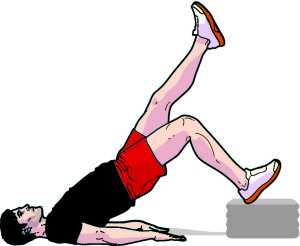
Muscles: Rear thighs, bottom, hip flexors, balance (quadriceps, hamstrings, glutes, piriformis muscle)
Why do it? To prevent knee injuries, it’s important to avoid an imbalance between your front and back thighs.
Technique:
- Lie on your back
- Place your right heel on a step
- Raise your left leg
- Lift your hips off the floor to form a straight line between your knee, hips and shoulders
- Slowly lower back to the floor but don’t rest your glutes on the floor
Watch point: Keep your hips level when lifting.


